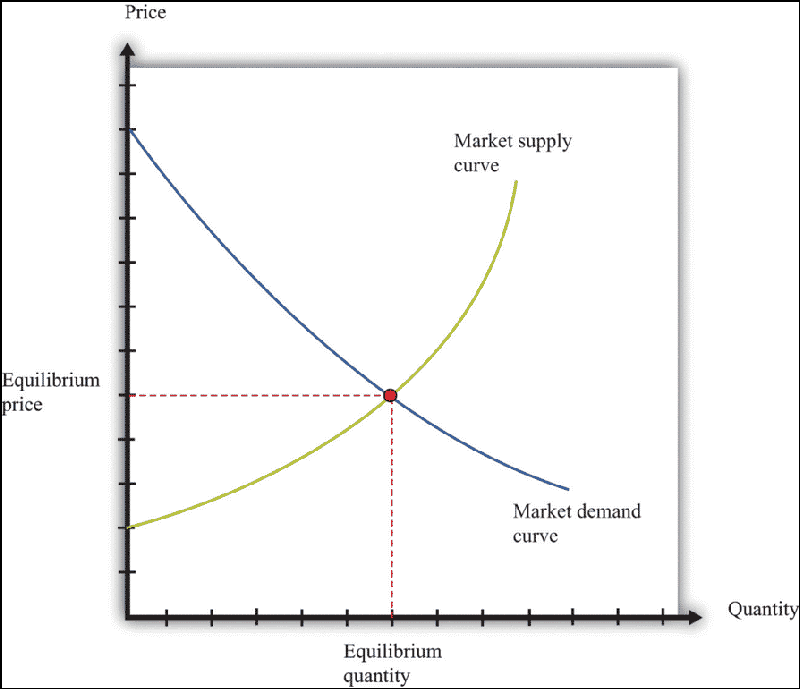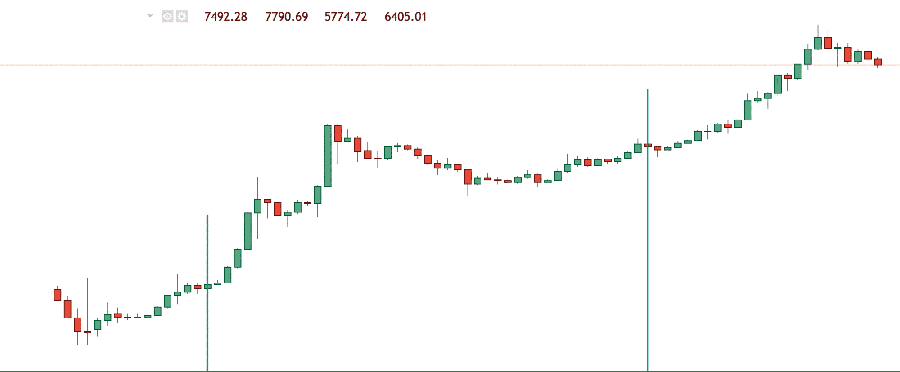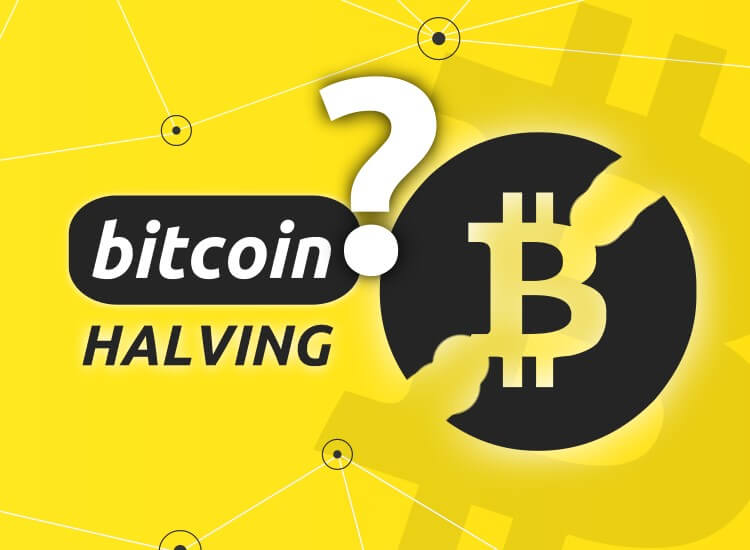In this guide, we will learn why Bitcoin halving happens and how it affects Bitcoin’s price.
After every 210,000 blocks, Bitcoin goes through a process called “halving.” This mechanism was integrated into the protocol by Satoshi Nakamoto himself. After a protocol goes through “halving,” it cuts the supply of new Bitcoins in half, halving the miner’s block production rewards, as well.
What is the Bitcoin Halving?
Specifically, the Bitcoin protocol cuts the bitcoin block reward in half. Every time a Bitcoin halving occurs, miners begin receiving 50% fewer BTC for verifying transactions.
Bitcoin – The 21 million upper cap
As you already know, Bitcoin has a 21 million upper cap. In other words, there will only be 21 million Bitcoins that will ever exist. So, why does Bitcoin have an upper cap in the first place? Ripple CTO David Schwartz says that there are three reasons:
-
Fiat currency is extremely inflationary in nature. The Federal Reserve controls the US Dollar. Any time they want to regulate the supply, they can simply inject more cash into the system. Many people see this as a highly unethical practice. This is why Nakamoto hard-coded an upper cap to make sure that nobody can randomly inflate Bitcoin’s supply as they see fit.
-
When Bitcoin was first designed, it wasn’t clear whether it would be adopted in the first place or not. By fixing the supply, prospective investors were incentivized to acquire Bitcoins before it runs out.
-
Finally, some way was needed to distribute the currency. Miners will initially use their computational power to distribute Bitcoin. After all the coins have been mined, transaction fees could take over to secure Bitcoin’s tokenomics.
Bitcoin – Understanding mining and deflation
Having a 21 million cap ensures that Bitcoin is a deflationary asset, as opposed to an inflationary one. At the very core of Bitcoin lies the concept of mining. We are pretty sure that you must have heard the term and may even be familiar with what it means in the context of Bitcoin.
For those who don’t know, mining is a process with which certain nodes, called “miners,” use specialized mining equipment to solve cryptographically hard puzzles.
When you send a transaction in Bitcoin, it gets queued up in a place called the “mempool.” The miners pick up these transactions from the mempool and form their block. If the block fulfills the minimum requirements, then it will get added to the Bitcoin blockchain. You must keep in mind that mining happens to be extremely resource-intensive. It costs a lot of electricity and money to mine Bitcoins. The block reward is supposed to economically incentivize the miners to participate in the mining process.
If there is no stopping mechanism, then the miners could, theoretically, mine away all the Bitcoins in the world, completely skewing the overall supply-demand equation
A slight detour- Supply and Demand
Before we go ahead, let’s give you a brief lesson in Economics 101. One of the most basic principles in microeconomics happens to be “supply and demand”.

The supply/demand equation states that given all else is equal, in a competitive market, the price of a particular product will vary until it reaches economic equilibrium, wherein the quantity demanded is equal to the quantity supplied.
So, this leads to two situations:
-
The supply is high and the demand is low, which leads to a decrease in the price of the asset/product.
-
The supply is low and the demand is high, which leads to an increase in the price of the asset/product.
If the miners were allowed to indiscriminately mine Bitcoins, it would exponentially increase its circulating supply, crashing its price in the process. This is why the Bitcoin halving mechanism was hard-coded into the protocol to monitor the circulating supply.
Can transaction fees compensate for the block reward?
Here’s a brief overview of Bitcoin’s halving schedule:
-
2009: Bitcoin mining rewards start at 50 BTC per block
-
November 28, 2012: The first Bitcoin halving takes place to reduce mining rewards to 25 BTC
-
July 9, 2016: Second halving takes mining reward down to 12.5 BTC
-
2020: The third halving will see the reward fall to 6.25 BTC.
By this estimation, the last Bitcoin will be mined after the 64th halving event, which should take place around 2140. After the last Bitcoin gets mined, the miners will rely entirely on transaction fees as a means of revenue, instead of the block reward.
While transaction fees are minuscule compared to block rewards. However, between December 2017 and January 2018, at one point, the average transaction fee spiked up to $54. The reason why this happens is very simple.
Consider this scenario. When the demand goes up, the number of transactions getting queued up in Bitcoin’s mempool spikes as well. However, Bitcoin blocks are limited by a 1 Mb size so there are only so many transactions that could be committed to each block. To circumvent this, the senders can increase their transaction fees to incentivize the miners to give them preferential treatment.
So, around 2140, we can expect Bitcoin’s demand to go up due to the following reasons:
-
No new coins: Firstly, since there will be no more new coins injecting itself into the market. This should fundamentally appreciate Bitcoin’s value, increasing its overall demand. This is why the value of the transaction fees should spike as well.
-
Use cases: It won’t be a stretch to imagine that around 2140, the number of use cases for Bitcoins will increase quite a bit. As the number of use cases increases, the transaction volume should increase as well. This will, in turn, lead to an increase in transaction fees as well.
What will happen when Bitcoin halves?
#1 Mining Stability
The first point to look into while judging the impact of halving is the mining stability of the system. As we have already stated, miners play a crucial role in Bitcoin’s ecosystem. Along with mining new blocks and aiding transactions, miners are also responsible for overall network upkeep. This is where we need to talk about “hashrate.”
Hashrate is the term used to describe the computational ability of a network. Higher the hashrate, more the speed and security of the network. Conversely, lower the hashrate, and reduce the speed and security of the network.
If miners suddenly decide to leave the network, then the following may happen:
-
The network will get clogged up because the transactions will not be processed as no one will be mining any blocks.
-
A powerful mining cartel can use its superior hashrate to take over Bitcoin’s network via a 51% attack.
So, keep all this in mind, when you consider that miners depend on block rewards as a major source of income, how do they deal with the halving events? Do, they simply leave the network to cut their losses or do they soldier on for the good of the network?
Well… let’s take a look. We will be taking all the charts from BitInfoCharts.
2012 – Halving

So, what happened after the halving event? Well, first, let’s look at the effects on hashrate. Within two weeks, the hashrate of the network fell from 27.61 THash/s to 19.98 THash/s. However, after that, the hashrate steadily rose to 60 THash/s about six months later. So, as you can see, the network hashrate eventually improved after an initial drop.

Now let’s look at mining profitability. As you can see, the mining profitability plummetted following halving. However, it managed to recover within four months.
2016 – Halving

Now, let’s look at the effects of the 2016 halving on the network hashrate. The hashrate fell from 1.56 EHash/s to 1.40 EHash/s. However, it eventually improved to 3.85 EHash/s in seven months.

However, the mining profitability graph doesn’t paint as positive a picture as the hashrate chart. As you can see, it has become significantly less profitable to mine Bitcoin post the 2016 halving.
How can Bitcoin miners stay profitable?
There are a lot of steps that miners can take to remain profitable:
-
Miners can opt for energy-efficient hardware such as the Dragonmint T16 and the Antminer S9. These ASICs provide high processing power with lower power consumption.
-
Miners can move their mining operations to regions with cold weather and cheap electricity. Colder areas will allow miners to cut energy consumption from cooling systems drastically, Certain mining companies have moved to places like Ulaanbaatar, Mongolia, and Bratsk in Russia, where the weather is cold and the electricity is cheap.
-
MIners can also opt for alternative sources of electricity to help power their operations.
#2 Bitcoin’s Price

Finally, the big question that everyone is asking. Does Bitcoin’s price actually increase after it goes through a halving event? After the 2012 halving, the price of BTC/USD rose briefly from $11 to $12 before catapulting to $1,038 in just one year. That’s a 9,336.36% increase in price.
Then, 210,000 blocks later, in July 2016, Bitcoin went through another price surge. From June 9 to July 9, 2016, BTC/USD went up from $576 to $650 as buyers started accumulating Bitcoin in anticipation of the halving. The price then picked up the pace and went up to $2,526 precisely a year later on July 9, 2017. That’s a 288.60% increase in valuation.
Here’s a quick overview of the effects of the 2012 and 2016 halving events.

So, while Bitcoin did see an increase in price post the 2016-halving, it was not as substantial as the 2012-halving. According to experts, this happened because everyone in the community was highly anticipating the halving, so any expected price action was already factored in.
This is why it won’t be surprising if Bitcoin’s price action post the 2020 halving event isn’t that surprising. So, let’s look at the other side of the equation. What are the arguments against the halving event affecting Bitcoin’s price?
Will the Bitcoin price change?
Bitcoin’s current situation is a lot different from 2016 and 2012. There are specific issues that we will need to consider to understand why the halving may not affect Bitcoin’s price that much:
-
Miners may sell-off their block rewards instead of holding on to it when the market is up.
-
Bitcoin now has futures trading. Since Futures traders don’t require actual bitcoin to do their trading, this makes the volume of BTC mined a lot less important.
-
The amount of mined Bitcoin volume is minuscule compared to the total volume traded. Back in 2012 and 2016, the ratio wasn’t this skewed. However, nowadays, millions of Bitcoins are trading daily. So, even if the block reward reduces from 12.5 to 6.25, it won’t make much of a difference. With the presence of institutions in the marketplace, the trading volume of Bitcoin is higher than ever before.




